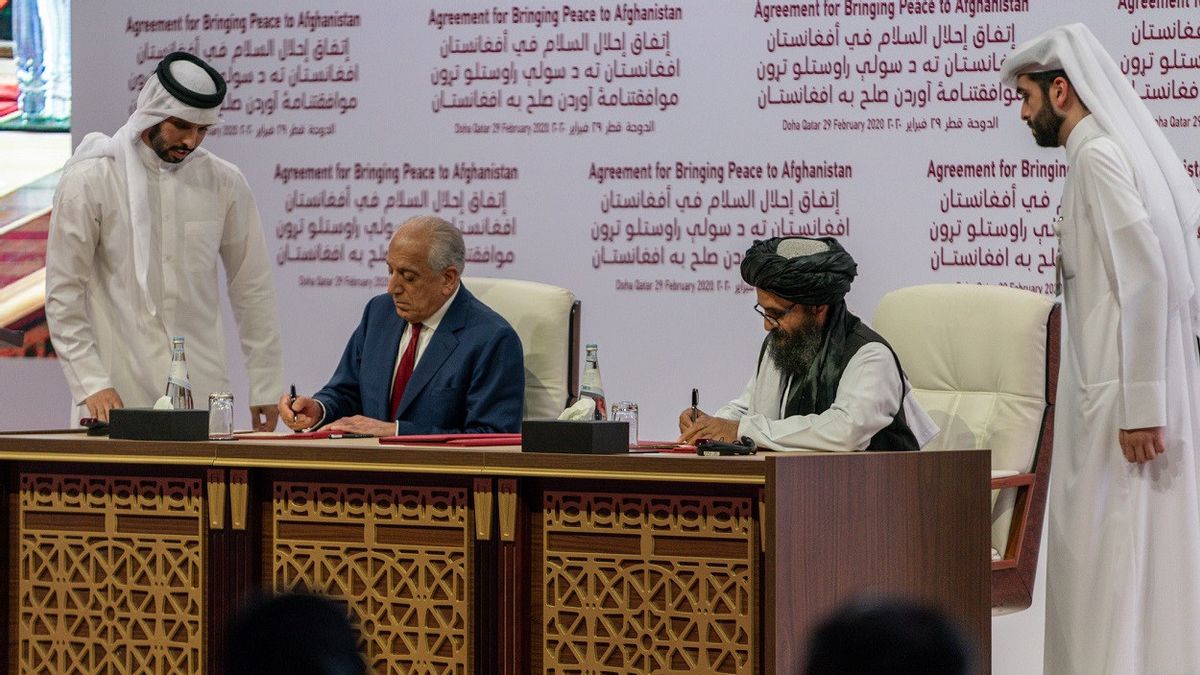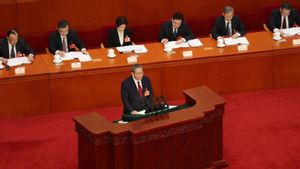JAKARTA - The long war between the United States and the Allies in Afghanistan is said to be a senior general at a stalemate, five or six years ago, before finally reaching the Doha 2019 agreement with thousands of Taliban prisoners being released.
Secretary of Defense Lloyd Austin, accompanied by Chief of the Joint Chiefs of Staff General Mark Milley and United States Central Command (CENTCOM) Commander Marines General Frank McKenzie at the invitation of the US Congress, discusses Afghanistan, Wednesday 29 September.
Addressing Congress, General Mark Milley said he believed the war in Afghanistan had reached a stalemate some five to six years ago.
"I think if you go back five, six years ago, I know it was a dead end. Losing is a different word, but I believe it was a dead end, and I believe, five or six years ago, it was unwinnable for means. US military. For some reason," Milley said, citing CNN Sept. 30.
Milley said he did not believe there was a 'military solution' to the war in Afghanistan five to six years ago, but instead thinks a negotiated settlement is the best option.
"But I know years ago it was a dead end, saying it over and over, internally and externally, and victory would be defined as a negotiated solution, as most insurgencies have historically been. They resulted in a negotiated solution between the rebels and the regime. And I think that is the best way to deal with it. I don't think there is a military solution." said Milley.
In the end, the Doha, Qatar Agreement which the United States led by Donald Trump signed with the Taliban on February 29, 2020, "reconciliated the two sides," reports Al Jazeera. The agreement was signed by senior Taliban figure Mullah Abdul Ghani Baradar with US representative Zalmay Khalizad.

Meanwhile, Secretary Austin told Congress that the agreement would allow the Taliban to gain power, with the release of many prisoners as part of the deal, reinforcing the group.
"As part of the agreement, we agreed to stop air operations against the Taliban. So the Taliban are getting stronger. They are increasing their offensive operations against the Afghan security forces. And the Afghan people are losing a lot of people every week," he explained.
"In addition, we were 5,000 prisoners and those prisoners, many of them prisoners, came back to fill the ranks of the Taliban. So they became much stronger, they continued their attacks, we got smaller," he explained.
According to the text of the February 2020 agreement, which was not signed by the Government of Afghanistan, approximately 5,000 Taliban prisoners and another 1,000 prisoners will be released by March 10, 2020, the first day of intra-Afghan negotiations."
In the months following the deal, US Special Representative for Afghanistan Zalmay Khalilzad repeatedly urged the parties to release the detainees as a means to pave the way for the start of intra-Afghan negotiations.
Meanwhile, former Secretary of State Mike Pompeo said in August 2020, "We recognize the release of these detainees is unpopular. But these difficult actions will lead to the important outcome that Afghans and Afghan friends have long sought, a reduction in violence and direct talks. which resulted in a peace agreement and an end to war".
"After 40 years of war, bloodshed and destruction, the parties are ready to start the political process to reach a negotiated settlement," he said.
The English, Chinese, Japanese, Arabic, and French versions are automatically generated by the AI. So there may still be inaccuracies in translating, please always see Indonesian as our main language. (system supported by DigitalSiber.id)








